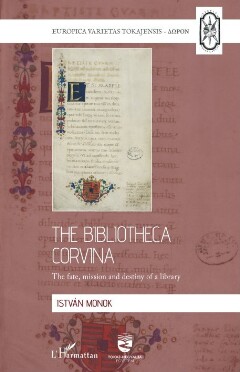Page 123 [123]
(1861-1876) then presented him with four corvina codices, which the emperor
(Franz Joseph, 1848-1916) donated to the Hungarian National Library as a ges¬
ture of good faith two years after the Compromise (1876).""
Meanwhile, the Hungarian Academy of Sciences also prepared a research trip
in 1862.°° The expedition was successful in that, at least in retrospect thanks to
the orientalist Andreas David Mordtmann, the envoy of the Hansa cities to Istan¬
bul, Hungarian scholars gained real knowledge of 16 codices.
In defeating the Hungarian Civic Revolution and War of Independence (1848¬
1849), the Russian Empire came to the aid of the Habsburgs. During the Russo¬
Turkish War of 1877-1878, the students of Pest held demonstrations sympathis¬
ing with the Turks and some towns even organised fundraisers for the Turks. As
thanks for gesture, in 1877 Sultan Abdul Hamid II (1876-1909) donated 35 codi¬
ces, which he believed were all corvina, to the “students”, that is, to the University
Library of Budapest."
The Bibliotheca Corvina and some of its items were also part of diplomatic af¬
fairs after the First World War. In 1923, with the support of the Hungarian state,
the first French-language awareness-raising volume’ was published to remind
those who had been excluded from the community of nations by the peace treaty
after the Great War that they had been part of the preservation of European cul¬
ture. In 1926, on the 400th anniversary of the Battle of Mohács, Miklós Horthy,
Governor of Hungary (1920-1944), emphasised the role of the Italians in the fight
against the Turks in his speech. In 1927, Benito Mussolini (1883-1945) donated
two corvina codices*® from the Biblioteca Estense in Modena to Hungary. The
Venice Agreement (1932) provided for the transfer of Hungarian cultural prop¬
erty that had remained in Austria after the dissolution of the Austro-Hungarian
Monarchy. Most of the corvinas, which are now kept in the National Széchényi
Library, were transferred to Hungary at that time.
Hungary’s immediate programme after joining the European Union (2004)
was to collect the items of the famous library, now in digital form, the Bibliotheca
Corviniana Digitalis, to symbolise the historical unity of Hungary and Western
Christian Europe. In 2005, the Bibliotheca Corvina was listed on the UNESCO
World Heritage List.’ As a result, a reassessment, a new study, and a new de¬
scription of the items kept in the individual libraries has begun, with the results of
this research being published in the Supplementum Corvinianum series.
> Mıxö 2002.
560 Mapas 2004, 65-70.; a description of the research trip to Constantinople, including an analysis of the
role of Arnold Ipolyi, with new sources: Emöpı 2006.
561 Eröpı 1877 (2001).
»2 Hevesy 1923. (Popularising articles were also published, such as Schütz 1934).
56 Cr. Csonrosı 1891a.
564 Cr, Maurer 2009, 175-183.
565 On this occasion, an exhibition was held at the Bayerische Staatsbibliothek in Munich, and a new
description of the corvinas preserved there can be seen as its catalogue: FABIAN-ZsUPAN, hrsg.
Münchener Corvinen, 2008.
121

